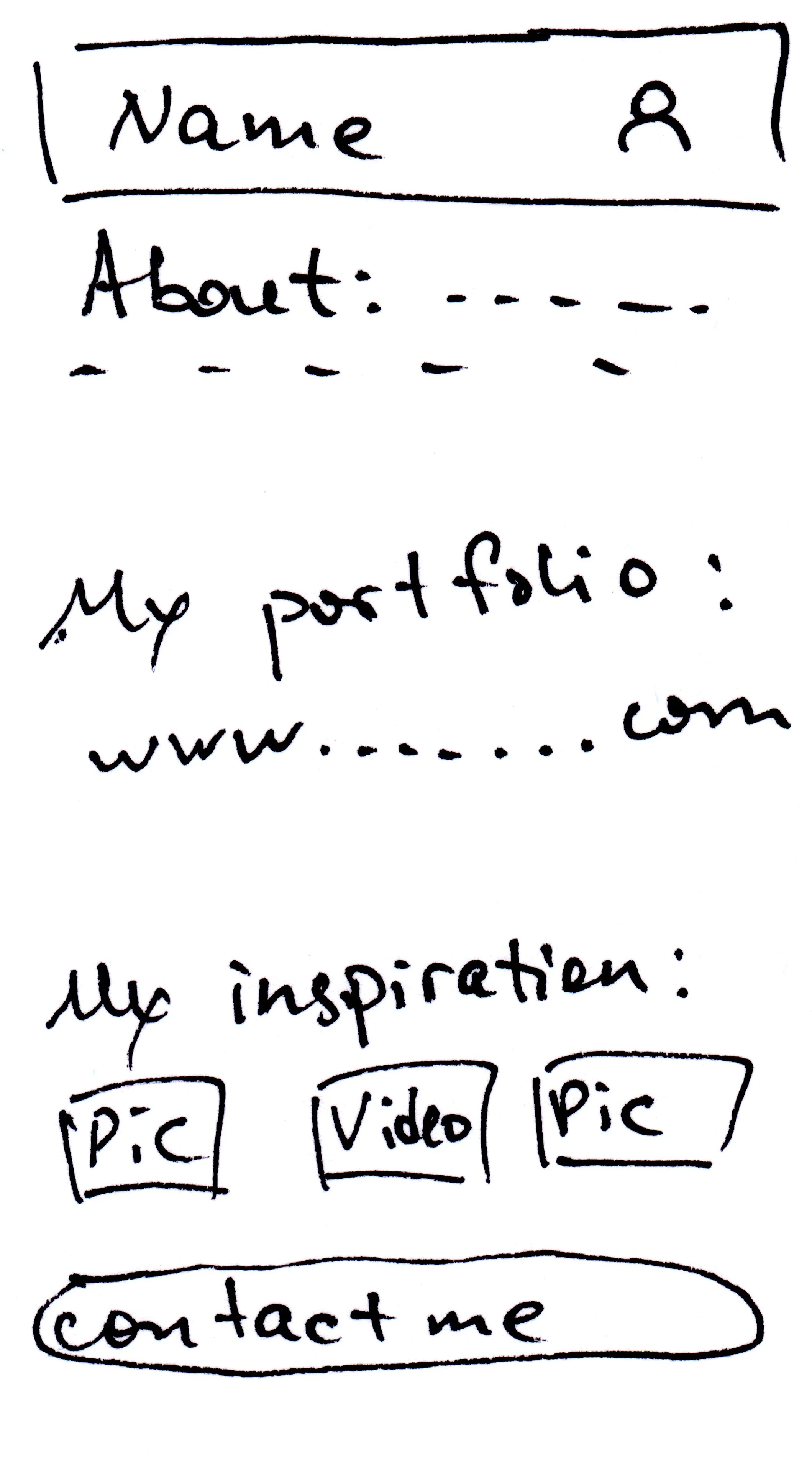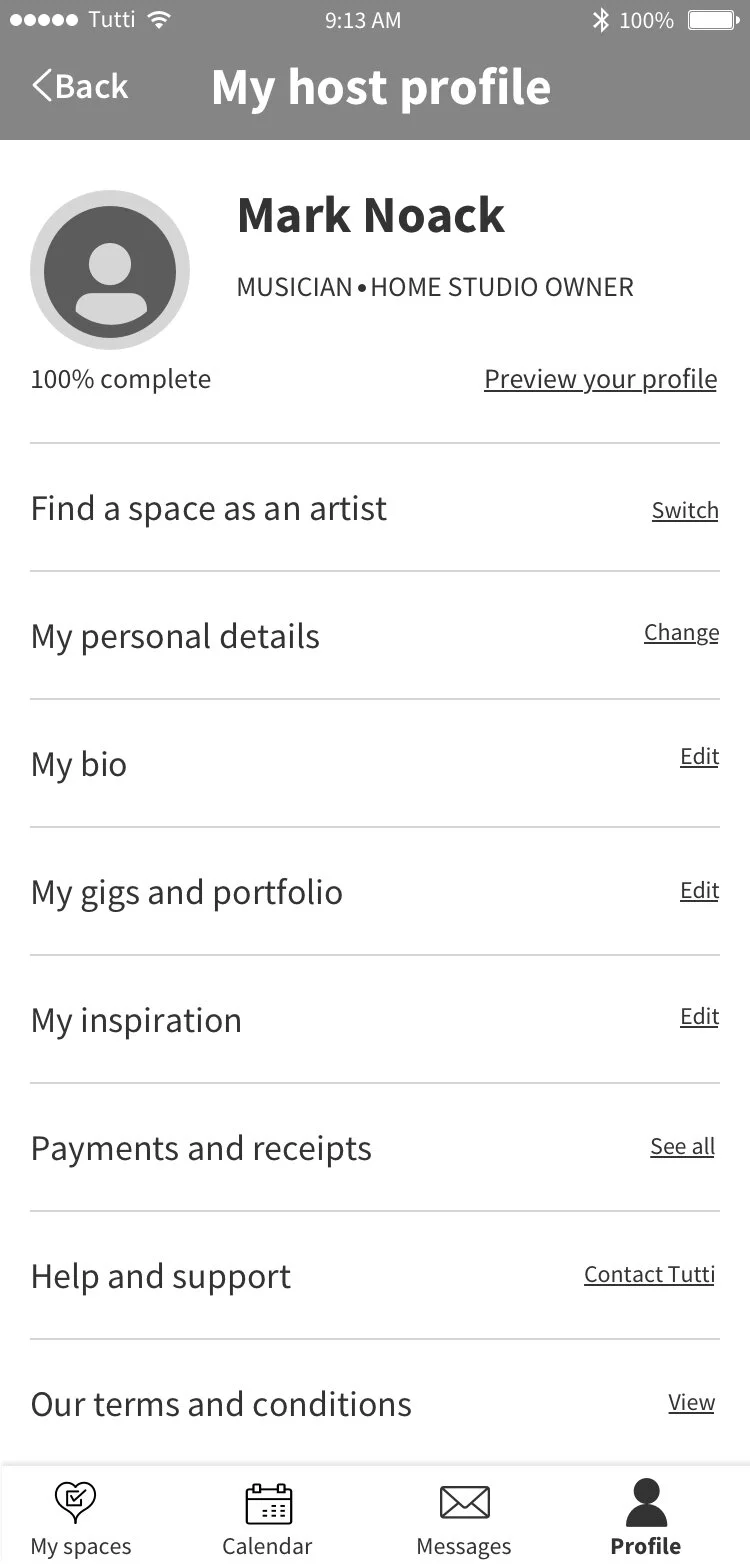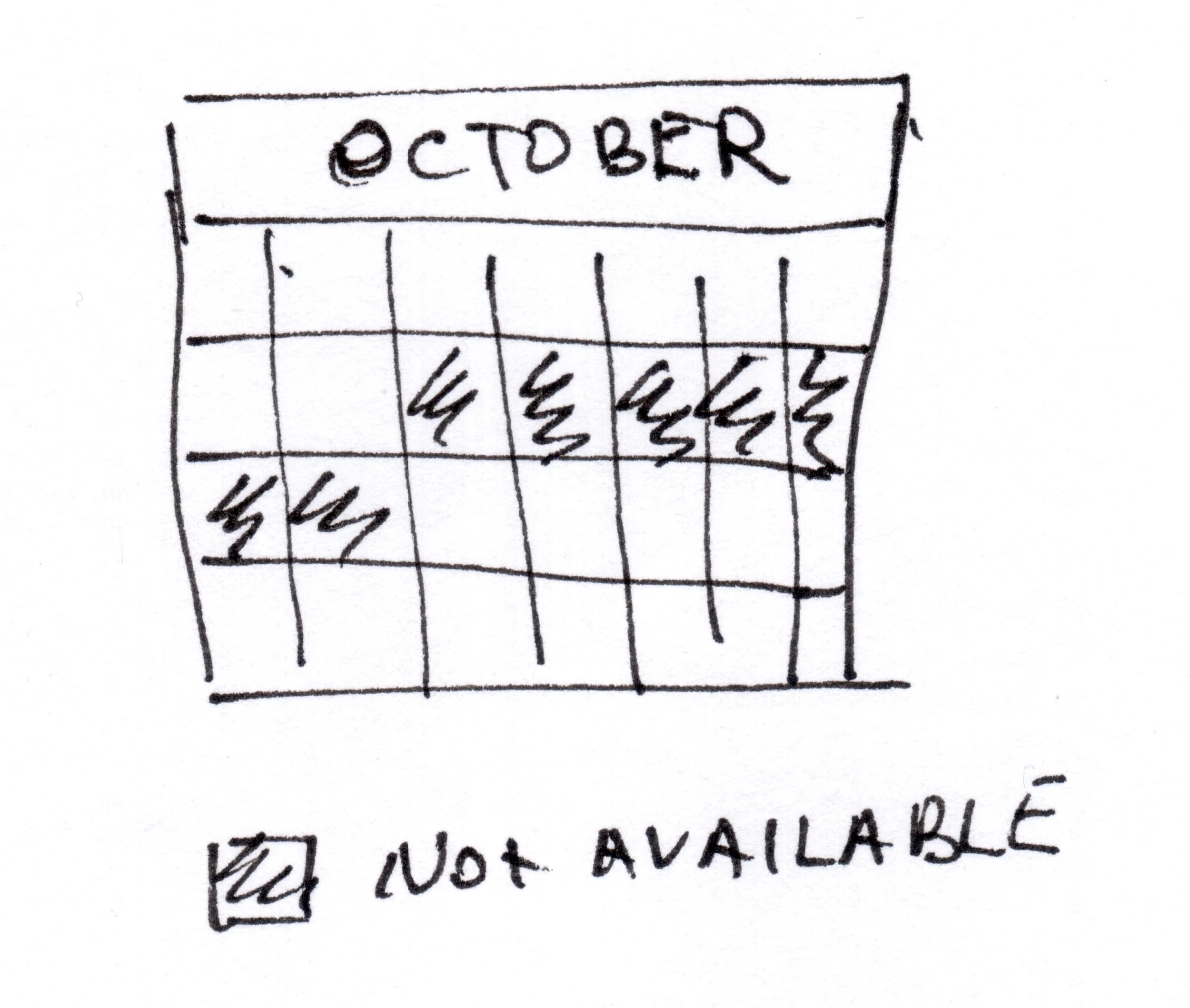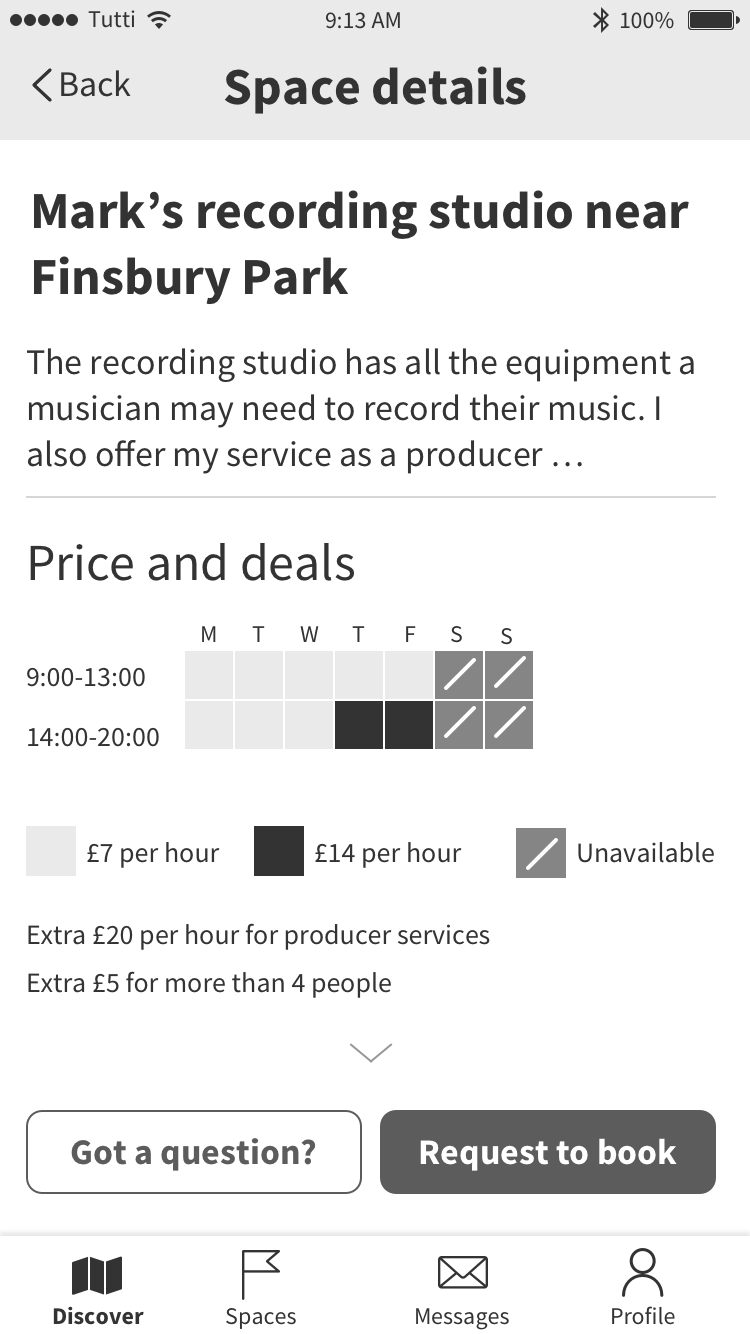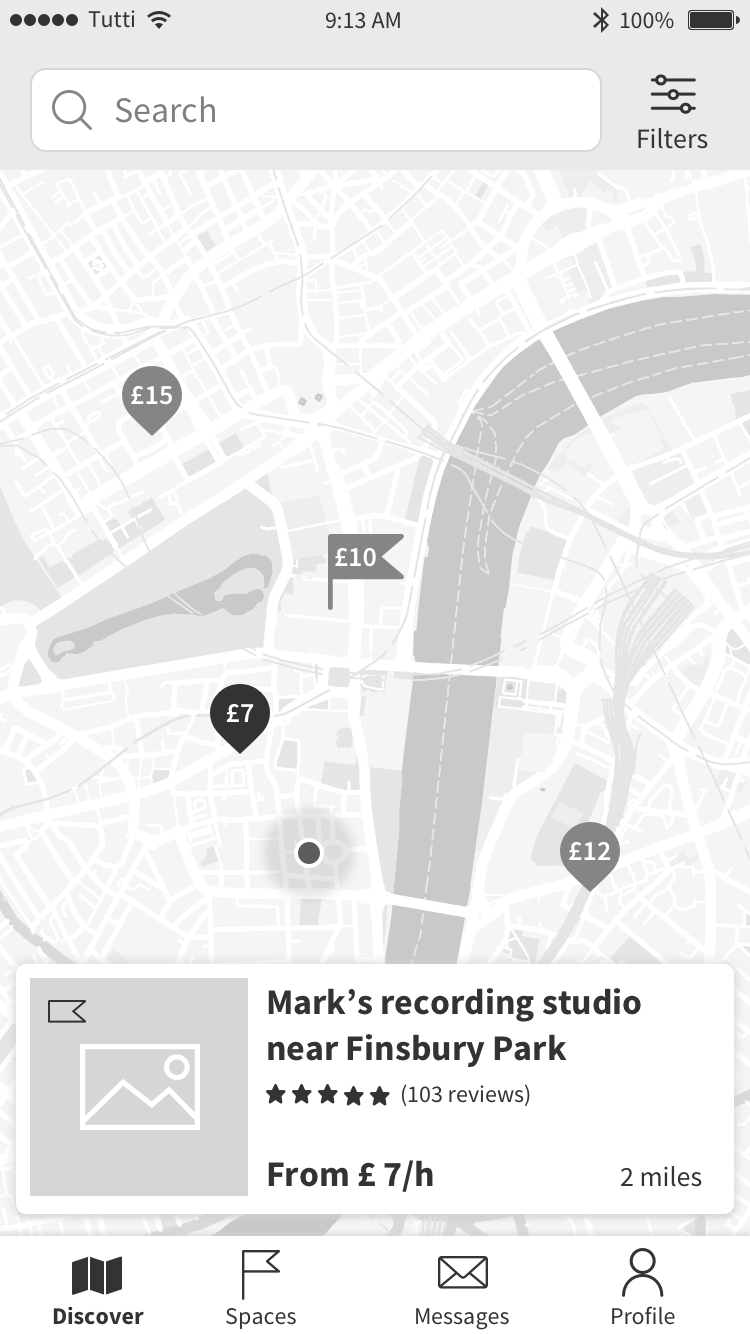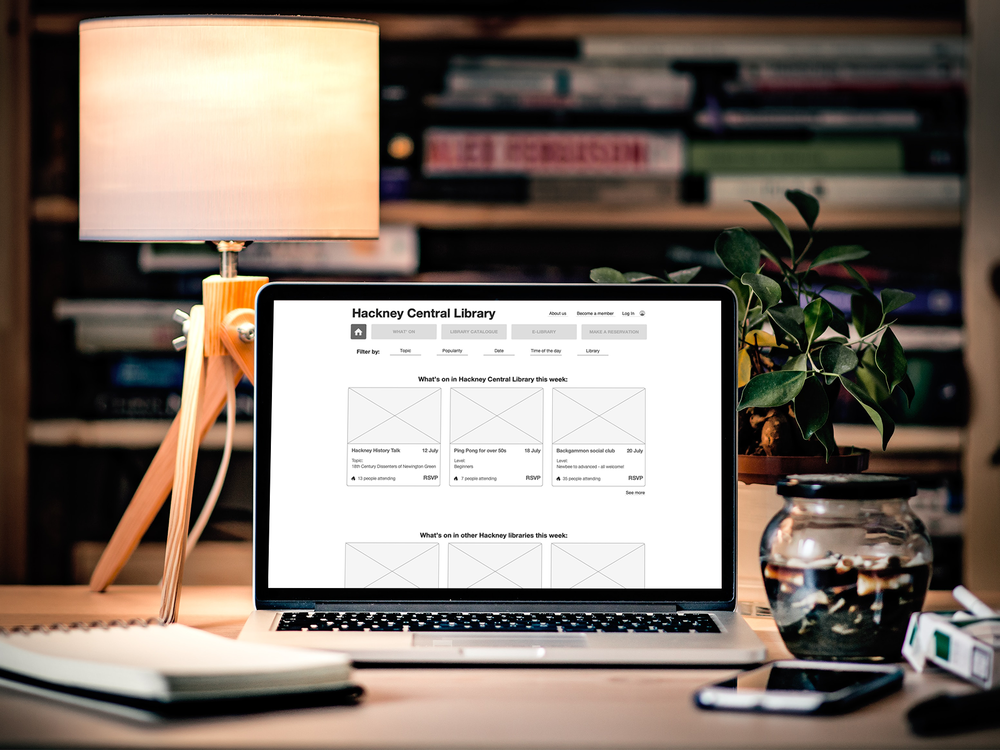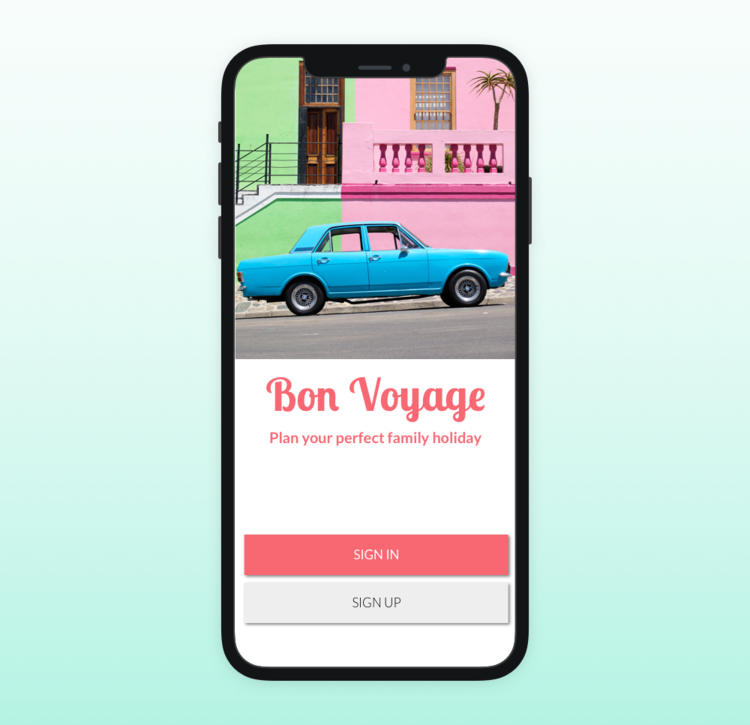Tutti.space
How might we help an e-commerce startup for creative people increase conversion rate and build trust among their users?
Brief
Tutti.space wanted to build a native app that will work along with the existing site. The client was seeking to increase conversion and increase retention. We needed to cater for two distinct groups of users: Hosts and Artists.
Solution
We added user research to the process and designed a cohesive experience, including multiple scenarios for two user groups: Hosts and Artists. We focused on eliminating three key areas of friction: trust, pricing, search.
Team and my role
4 sprints. 7 UX designers. My contribution was:
Competitive analysis
User interviews and usability testing
Designing solutions to tackle the trust issue
Setting measurements to track user behaviour
1. Identifying the problem
Approach
The workshop was an effective way to quickly dive deep into the business needs and hear the story from the client perspective. The service at hand is part of the shared economy culture, which has many brilliant examples of success, so we spend time analysing similar services. Finding the right users was a challenge, so we combined qualitative and quantitative research techniques to identify the biggest problems and understand users behaviour.
Stakeholder insights
The result from our workshop was the discovery of and agreement on three major areas of friction:
List of filters is too long
Messaging system does not exist
Lack of flexibility to negotiate pricing
Secondary research
Analysis of e-commerce platforms helped to understand the market and see opportunities:
None of direct competitors has a native app. There was our opportunity to stand out!
Google Analytics revealed some aspects of current user behaviour:
55% of users do not use filters at all
Understanding users
Initially we spoke with 5 Hosts and 3 Artists and have produced two distinct user personas.
Joe is a cello player and has recently graduated from his Music School.
He is 23 and lives in a shared apartment. Joe is just staring his musical career and between his gigs gives private cello lessons to kids.
He needs an easy way to find a reliable rehearsal space because they can’t practice at home due to time and noise constraints.
Mark is 53, plays piano and has a recording studio at his garage.
He has regular clients who rent the studio, but he also wants to help young musicians and uses Tutti.space to advertise his studio.
Mark wants to rent out his space to responsible artists so that he can earn extra cash and make new connections.
2. Framing the problem
We mapped a high level user journey for both user groups and highlighted refined areas of friction to see the full flow.
3. Ideation and paper prototypes
We brainstormed over 40 different ideas, evaluated and filtered them to find the most promising solution(s).
We went to the nearest Music and Drama School to talk to our potential users and tested our concepts with 8 artists.
At the same time we were adding notes and missing features to the current product to produce a cohesive flow and address users pain points.
Based on user feedback and our assumptions, we drew additional steps on paper and tested different flows with users, iterating on the go.
4. Evolution of ideas
Building trust
Hypothesis: Linking Artists accounts with their personal portfolios will help getting to know people.
Testing: Artists liked the idea, but also wanted to see the same information on Host profiles.
Iteration: During the testing most Hosts liker this feature, but some were sceptical, so we kept this optional.
Clarifying pricing
Hypothesis: Hosts can set different prices and availability at any point, using in-app-calendar and manage it when needed.
Testing: To our surprise, Hosts didn’t want to manage the calendar, and preferred to have the space available by default. Artists were OK with enquiring about availability.
Iteration: We introduced simple price set up for Hosts during the onboaring process, and allowed Artists to send an enquiry, or request booking if specific date is known.
Simplifying search
Hypothesis: Setting preferences during on-boarding plus simple filtering system helps users choose the relevant place quickly.
Testing: Users wanted an option to save search preferences for repeat bookings and find similar places quickly.
Iteration: We introduced “Saved spaces” tab, which holds places user booked before, saved and suggested spaces.
5. Result for the users and the business
As a result of our design decisions we designed and produced wireframes and InVision prototype that has:
On-boarding process for both Hosts and Artists that shows what Tutti.space offers and how it protects its users. It helped to tackle the trust concerns of the users.
Easy in-app communication process with all steps of booking confirmation and payment, where both parties can agree on the timing and the price. It tackled both: users’ frustrations of having to exchange their private numbers to communicate, and risks for the business of loosing users who go off the platform to agree on the service.
A feature to see users profiles and add personal touches like their portfolio and inspirations. This feature helps people get to know each other a bit better and find like-minded people. The value of community for artists was highlighted throughout all interviews with our users. This is an opportunity for Tutti.space to create such community.
Significantly simplified search and filtering systems for the Artists that offers a quick and seamless way to find what one is looking for. Our solution offers easier conversion, which was a business priority.
6. Bringing the app to life
A user could have both roles: be an artist and be a host. We introduced different colours to highlight the current user’s role.
Green colours are for Artists
Blue colours are for Hosts
Reflections
Teamwork is crucial when working with agile methodology.
We had just 4 weeks to complete this project, so we had to move fast. We tested and iterated on all our hypotheses simultaneously and had strict times for group discussions that helped us adapt to changes and set up goals for the next sprint. Smart delegation and close collaboration within the team remained crucial for success.
One-size-fits-one or Always check with the user.
One memorable thing for me was when our users disproved some of our hypotheses, which we thought were conventional and widely-used features. It turns out that some things we wanted to introduce were unnecessary for our particular project. In addition, we had to deal with two distinct groups of users, and what worked for one was not convenient for the other. If we hadn’t tested our hypotheses with both groups, we would have failed the other half of the users. It proved the point that there is no one-size-fits-all design, and that checking your ideas with users is crucial.
Other projects
London public library
Library as a community hub.
Islington council
Personalised portal to use council services.
Bon Voyage
A mobile app for single parents traveling with kids.




